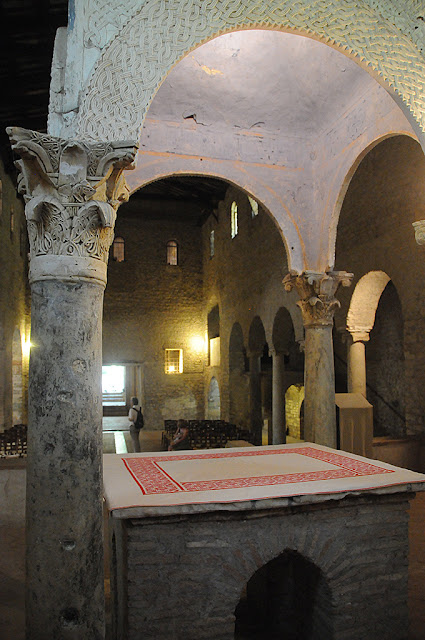Located near Rome in the town of Palombara Sabina is the abbey of San Giovanni in Argentella -- a city in which the antipope Innocent III was arrested in the year 1180. Construction on the abbey began in the sixth century, however a previous structure, possibly Byzantine in origin, apparently stood on this site already by the time of the fourth century, and this in turn was founded upon the foundations of an earlier Roman era structure.
The abbey was thought to have originally been Benedictine, but by the thirteenth century it transitioned into other hands and by the mid fifteenth century the structure was in decline following the absence of any form of monastic life in the abbey.
The monastery is of a typical Romanesque style, weighty and bulky, with a bell-tower that is typical for those of the period and echoes those seen attached to the many basilicas of Rome itself.
The altar, which is not quite cube shaped in form, is similarly representative of the altars of the earlier Christian period, as is the simple but noble ciborium magnum that rises over it.
The arches of the ciborium contain an intricate series if interlaced knot-work while the columns contain intricately carved Arabesque capitals that are dated to the eleventh or twelfth century.
The basilica was at one time decorated with various frescoes, it is thought perhaps toward the fourteenth century. The following are just a sampling:
 |
| S. Guglielmo |
 |
| The Madonna of the Milk |
Whenever I see structures like these, I am frequently put to mind of the continuing promise and potentialities for this style in our time. It would answer many of the liturgical tensions of the twentieth century, most especially with regard to the altar.
Photo credits: Before Chartres
-------
Do you like Liturgical Arts Journal's original content? You can help support LAJ in its mission and vision to promote beauty in Catholic worship either by:
You choose the amount! Your support makes all the difference.



















